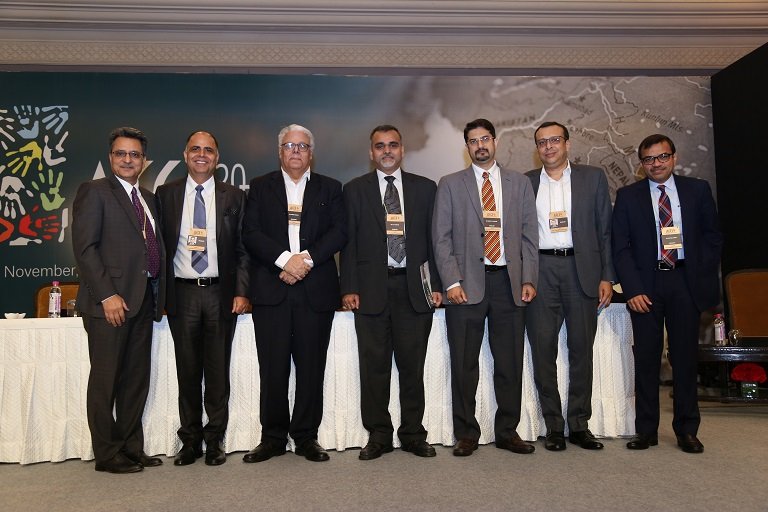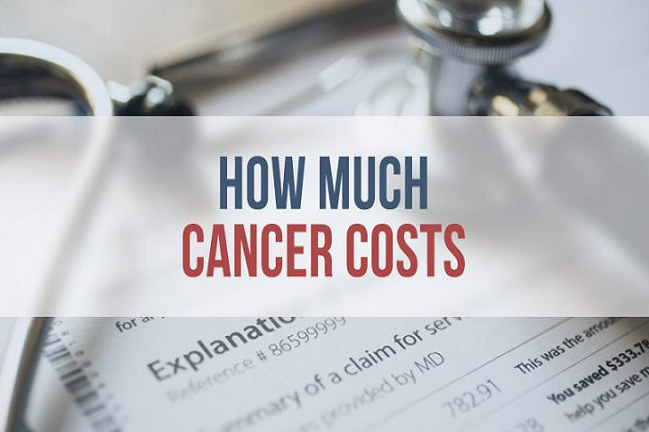Session 6 started off with discussing pricing for cancer care, health insurance for cancer treatment, government policies regarding cancer care. The conclusions drawn by the panel were to train oncologists on dealing with patients in a gentler way, bring down the prices of all the various aspects of cancer care, increase insurance penetration and coverage, and levy price control on a group of drugs.
Session 5 saw discussion of patent laws concerning pharmaceuticals, value based healthcare through prevention and product innovation, family ecosystem in cancer care, total management of cancer in all its aspects, and public-private partnerships to lead to optimum and affordable cancer care. The conclusions reached were free drugs for BPL patients, development of infrastructure in PPPs, and introduction of fair pricing of drugs without any loss of quality.
Session 4 opens with various modalities available for cancer diagnosis, their status, the affordability, the chances of early diagnosis with these modalities, and using out-of-the-box ideas to deal with these issues. Keeping all this in mind, we concluded that early diagnosis and screening techniques should be used in a more widespread fashion, spreading awareness and educating people about the cancers may increase the chances of reducing of mortality and incidence of cancer.
Session 3 starts with the valid points concerning lack of research in the field of cancer care: lack of money, manpower, and time, leading to very little research. Next point brought forward was public-private partnership leading to the reduction of cancer burden with the last speaker talking about a new model to provide highly subsidized cancer care to all. In conclusion, it was surmised that political will is required to ensure that research is incentivized and done, while public-private participation can reduce the cost of cancer care and research needs to focus more on screening techniques and early diagnosis techniques.
Session 2 brought up the points of the taxes being levied on machines used in cancer care, manufacturing outside India leading to increased cost of machines, orphan drug relevance and the requirement of biosimilars. The conclusion reached was that taxation on the machines should be reduced or removed, manufacture of those machines should move to India as joint ventures, change in orphan drug policy and the need for increased biosimilar production.
Session 1 brought forth various points and recommendations that could make cancer care affordable. We went from insurance concerns, policy changes, early detection, screening, to banning tobacco. We found out that nearly 70% of our cancer burden could be preventable. Finally, we concluded that insurance and banning tobacco could lead to decrease in cost and burden of cancer care.
Is this the model to follow?
Community oncology clinics are closing or being acquired by hospitals at a swift pace and they are looking hard at the reasons why that’s the case, what makes sense financially and how it impacts the patient. It was argued that the site of care matters a lot and should be kept in the community setting – for the healthcare system in general and also for patients on an individual level. It has been noted that changing the site of care from low-cost physician offices to higher-cost hospital outpatient settings is one of the key cost drivers in cancer care. Reimbursement is much higher when the care is delivered in a hospital outpatient setting, rather than a physician’s office.
When a patient was told that her doctor was becoming part of a hospital system and her appointments would be at a facility 30 miles away she panicked. She was worried about the practical matter of how she would get to her appointments and how much extra time she would be spending in transit. She also worried about losing the close relationship with her clinic staff and how much more it was going to cost in a hospital outpatient setting where copays and out of pocket expenses are much higher. And what about cancers that are physically very painful or patients who are experiencing lots of complications – is asking them to travel long distances to receive care ok?
The medical profession must promote justice in the health care system, including the fair distribution of healthcare resources. Physicians should work actively to eliminate discrimination in health care, whether based on race, gender, socioeconomic status, ethnicity, religion, or any other social category. Patients should be cared for in the place where they will receive the best care at a fair price. They deserve the ability to get care in their community at a price they can afford.
A look into the current situation of the Indian manufacturing capabilities
The total market for diagnostic and medical equipment in India is worth about $3.5 billion and is expanding at an annual rate of 18%. While some “top of the line” Western device companies can sell their triple-A products to private Indian hospitals, most public hospitals will require simpler, portable, easy-to-use and more affordable versions of Western diagnostic and cancer treatment products.
Manufacture of medical electronic equipment forms a negligible part of total electronics production, but there has been a steady increase in the value of its production. In the 15 year period from 1988 to 2003, its value increased 12 fold to Rs. 421.81 crores, at about 18% per annum. [4] The increase in the manufacture of some imaging equipment, such as medical X-ray and ultrasound equipment can be attributed to the manufacture/assembly of these by multinationals such as General Electric (GE) and Siemens, for sale in India and other neighboring countries. GE has partnered with local Indian companies to develop cancer-related services and products. GE and the Indian Institute of Technology Madras’ Healthcare Technology Innovation Center (HTIC) announced a 3-year research and development agreement in January 2014. GE and India’s Max Healthcare announced a partnership in March 2014 to develop cancer treatment protocols and pathways, a training institute and a virtual expert consultation program.
Overall, while manufacturing may seem to be picking up in the country, it is more in the form of subsidiaries, as joint ventures and as part of contract manufacturing. Increasingly, multinationals and other medical device companies from the US are outsourcing several of their activities to India, as a way of reducing costs in manufacturing, R and D, clinical trials and other medical services.
According to a July 2011 paper by the Indian Statistical Institute, the average cost of cancer care per patient in a government hospital (the All India Institute of Medical Sciences in New Delhi) amounted to Rs 36,812. And reports suggested that in private hospitals, the cost of cancer treatment ranged between Rs 2 to 8 lakhs.
As of 2015, this cost jumped to between Rs. 2.5 lakhs for a six month treatment with the cheapest generics to Rs. 25 lakhs and more for extensive treatment. Some breast cancer patients, for example, need targeted treatment drugs, which cost around Rs 75,000 for a course; a patient could need up to 17 courses. Similarly, a drug called Avastin – used to treat colon, kidney, lung and gall bladder cancer – can add around Rs 8 lakh to a patient’s bill at around Rs 1 lakh a cycle. ‘Hotspot’ drugs are now used for cancers with detectable and actionable mutations for example Dasatinib, Crizotinib, Osimertinib, Levatinib etc can cost upto 1 lakh rupees per month and need to be taken for indefinite periods. CAR T cell therapy for acute leukaemia costs 360,000 USD per treatment. Immunotherapies like Keytruda fur lung and colon cancer costs Rs. 3 lakhs per dose.
Additionally, procedures cost a fortune because hospitals have to pay a fortune for imported equipment. For example, a linear accelerator, which is used for radiation therapy, costs around Rs 10 crore, plus an import duty of around Rs 1 crore. Similarly, a PET CT scan machine, used to pinpoint the location of cancers, is anywhere between Rs 3 crore and Rs 6 crore. The costliest is a CyberKnife used for radiotherapy which costs around Rs 30 crore.
The cost to treat cancer in India might be cheaper than most developed nations, but it still is heartbreakingly expensive for the average Indian. And the exponential increase in cost that we have seen over the years is set to continue, with statistical analysis showing treatment in 2020 costing anything between 10 lakhs to 50 lakhs and more. Given the state of the middle class in this country and the rising cancer incidence, these costs could potentially bankrupt a large part of our population, driving them below the poverty line.








